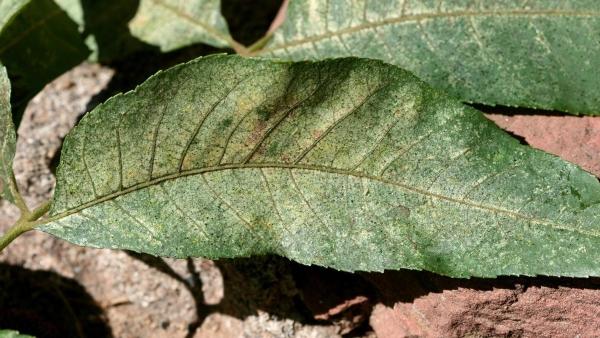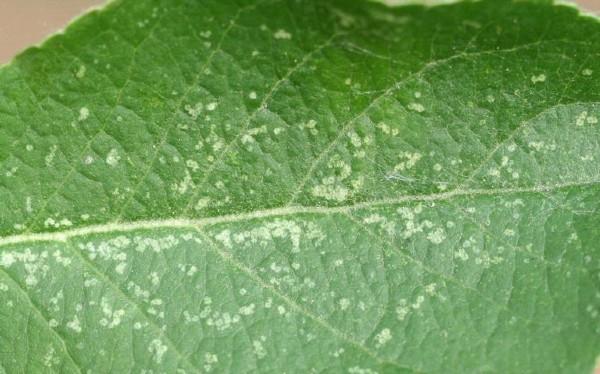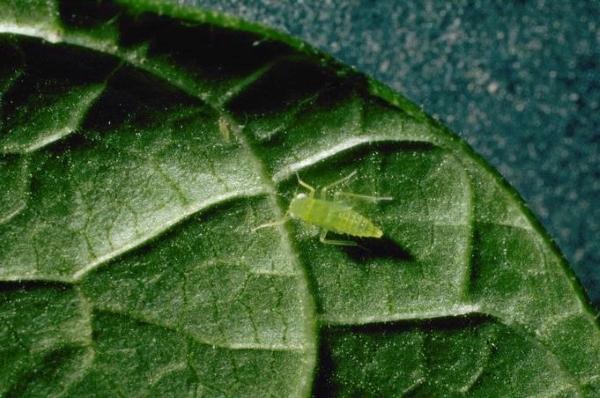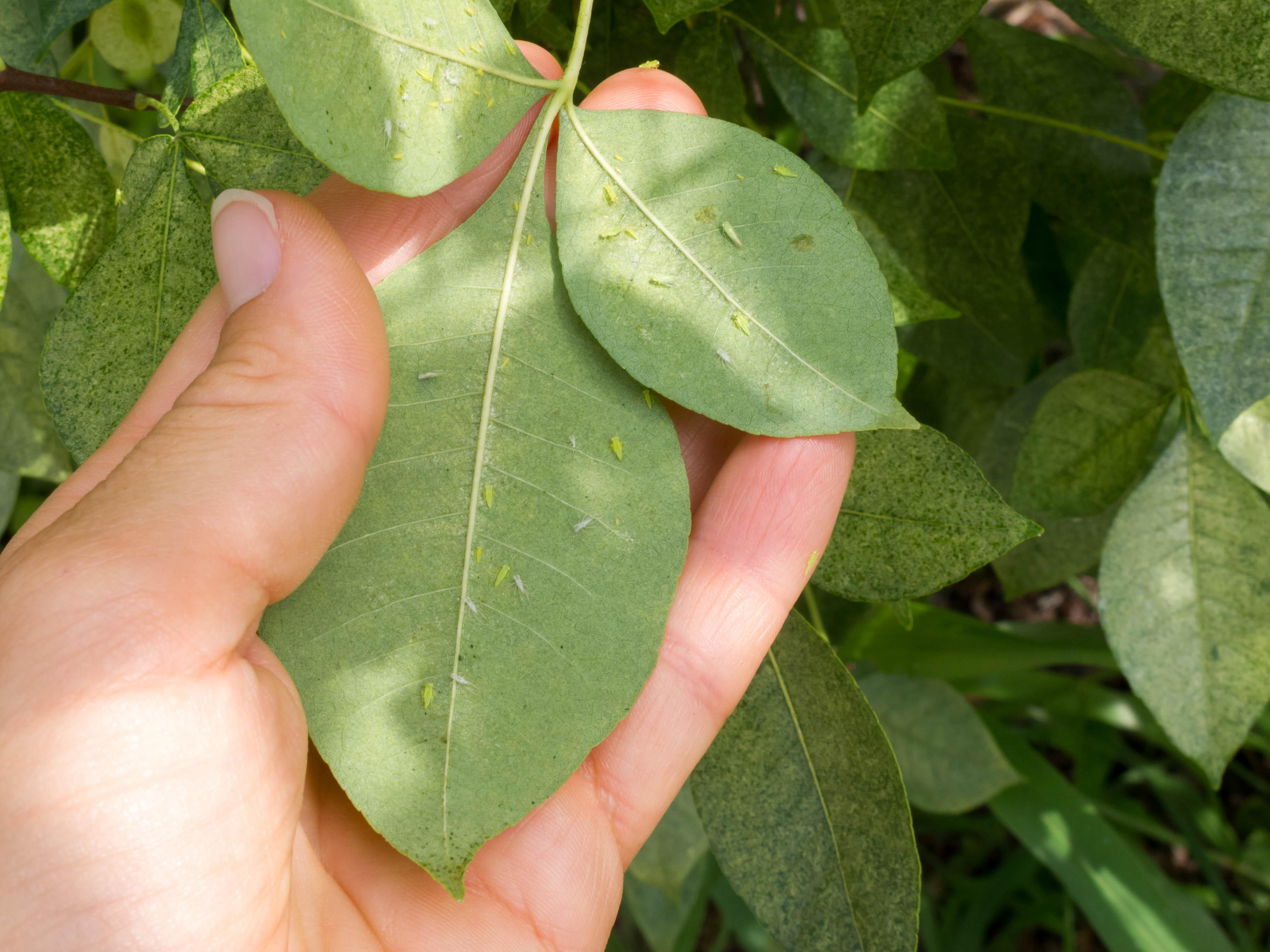What are leafhoppers?
- Leafhoppers are insects in the family Cicadellidae (order: Hemiptera). All members of this group use piercing-sucking mouthparts to suck out plant sap. They excrete honeydew, a shiny, sticky waste product.
- They go through three stages in their life cycle: egg, nymph, and adult.
- Adults of most leafhoppers are one-eighth to one-fourth inch long, slender, and hold their wings “roof-like” over their back. Many have angular, pointed heads. Their legs are modified for jumping.
- Immature leafhoppers, or nymphs, look similar to the adults but are smaller with short wings.
- Most pest leafhoppers are green with some color banding.
- Leafhoppers can transmit plant diseases.
- Over-use of fertilizer may increase leafhopper populations.

What symptoms or damage do leafhoppers cause?
- Leafhoppers feed on the upper and lower surfaces of leaves, usually the terminal leaves at the end of branches.
- Their feeding removes green chlorophyll pigment, leaving tiny white spots on leaves (called “stippling”) followed by curling, yellowing, and stunted leaves.
- Some leafhoppers transmit bacterial diseases that cause leaf scorch – browning along leaf edges.
- Leafhoppers also secrete a toxin into leaves as they feed, causing a distinctive set of symptoms known as hopperburn: leaf tips and margins curl, turn yellow to brown, and become brittle; leaves appear as if singed by fire. The toxin is not systemic, so damage is proportional to insect numbers.
- On vegetables, severe leaf damage and premature plant death are common on potato, whereas leaf discoloration and curling are more characteristic on beans.



Management on trees, shrubs, and flowers
Dogwood, cherry, apple, cottonwood, willow, honeylocust, hawthorn, and birch trees may be damaged by leafhoppers. Some species of leafhoppers may transmit bacteria causing leaf scorch symptoms on oak, elm, red maple, and red mulberry.
Trees and small shrubs may be protected with sprays of a registered insecticide if honeydew or stippling is a problem. Concentrate sprays where leafhoppers feed, usually on new growth.
On herbaceous annual and perennial plants: Control is generally not recommended. Leafhoppers are very mobile and new leafhoppers will enter treated areas after sprays have dried.
Management on vegetables
Potato leafhopper (Empoasca fabae) is a significant pest of over 200 plants including food crops such as potato and bean (mainly snap bean), eggplant, cucumber, pumpkin, rhubarb, squash and sweet potato. It favors legumes such as beans early in the growing season and potato later in the summer.
Inspect plants for young nymphs, which can crawl but cannot fly. Later, tap affected plants and watch for many quick-flying, tiny, pale green insects. Also, watch for stippled or bleached leaves and curled leaf tips.

Potato leafhoppers are generally first seen in late April or early May but they are arriving on average 7-10 days earlier in our area than just 20-30 years ago.
- Egg-laying can be prevented with row cover placed over plants as soon as seedlings emerge or transplants are planted. Be careful not to trap leafhoppers under row covers.
- Parasitoids and general predators (ants, spiders, ladybugs, lacewings) actively kill leafhoppers.
- For large numbers of leafhoppers on vegetables, use a registered insecticidal soap, horticultural oil, neem, pyrethrum, or combinations thereof. Spray early in the day when insects are sluggish. Thoroughly wet leaf undersides. Apply repeatedly for large populations.
- Dusting plants with diatomaceous earth may help.
- Keep weeds down, especially perennial weeds that harbor leafhopper eggs.
